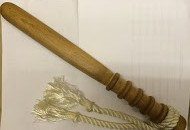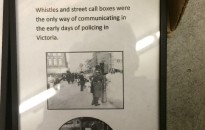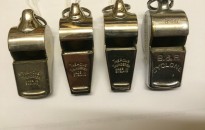Introduction
As with all police departments, the VicPD during the Great War had access to a variety of tools and equipment including batons, hand guns, whistles, and patrol wagons.
Baton
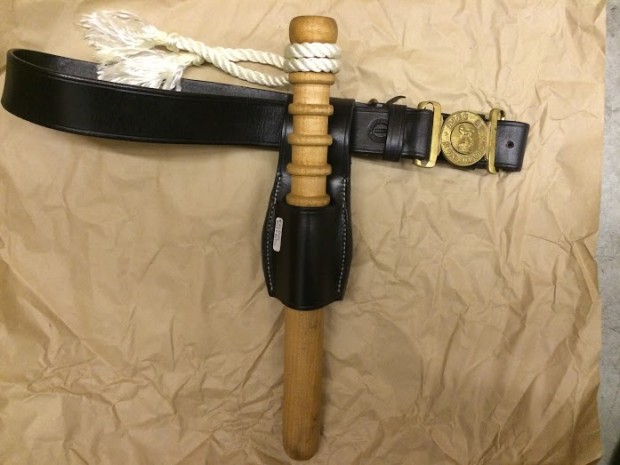
The simple, but effective, police baton in use was made of wood with five grooves at the base as a handle. Inside the baton was lead to increase weight. Two threads were tied at the base of the handle. The baton was holstered in a leather belt along the waist with the buckle reading “Dieu et mon droit.” The inner buckle has the image of a lion standing atop a royal crown.
Firearms
Like modern-day officers, firearms were issued to constables and

officers for extreme circumstances. The brand of choice was the American “Colt” of three variations: the Colt Revolver, the Colt Automatic, and the smaller Colt .25 Automatic issued todetectives. All variations required a minimum of six rounds and a lock preventing accidental discharge. They could be purchased by civilians based on the flier to the right.
A note of interest is the Colt Automatic, which comes in .32 and .389 calibres, has a safety whereby the operator must firmly hold the handle and pull the trigger to fire, reducing the possibility of accidental discharge. The fact it is emphasized in the flier indicates there was a real concern over accidental discharges of firearms by civilians and police for obvious reasons.
Patrol Wagon
Because the automobile was still relatively new in the world, the
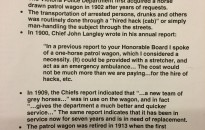
Victoria Police Department relied on “police wagons.” In 1900 Police Chief John Langley highlighted the need for a wagon to replace the older method of using “cabs” or man-handling suspects to the station and noted the possibility of it being an emergency ambulance. By 1913 the patrol wagon was phased out in favour of automobiles. Nevertheless, the patrol wagon’s legacy was that it recognized and fulfilled the need for a faster and more mobile means of transportation in Victoria’s growing population and area.
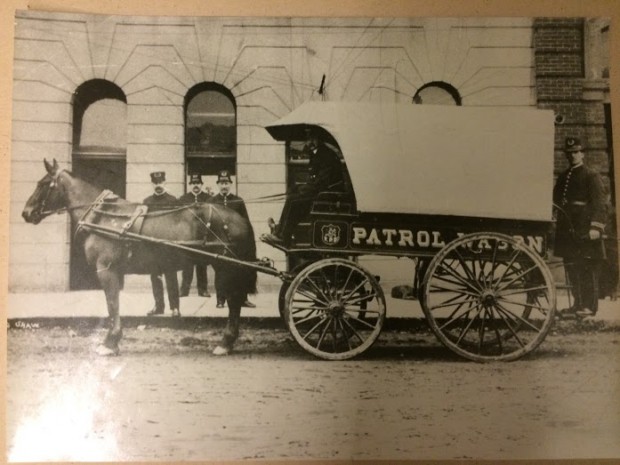
Whistles
Today, sirens and flashing lights indicate an emergency. The need for a high-pitched distinguishable noise has always been recognized and in Victoria, constables and officers were issued whistles in place of sirens and street call boxes were placed around the city to call for help in place of radios.
These ensured everyone knew there was a crisis and warn them of a crime such as a chase or robbery, or perhaps an emergency.
Written by Joseph Yuson
References
Victoria Police Department Archives.
